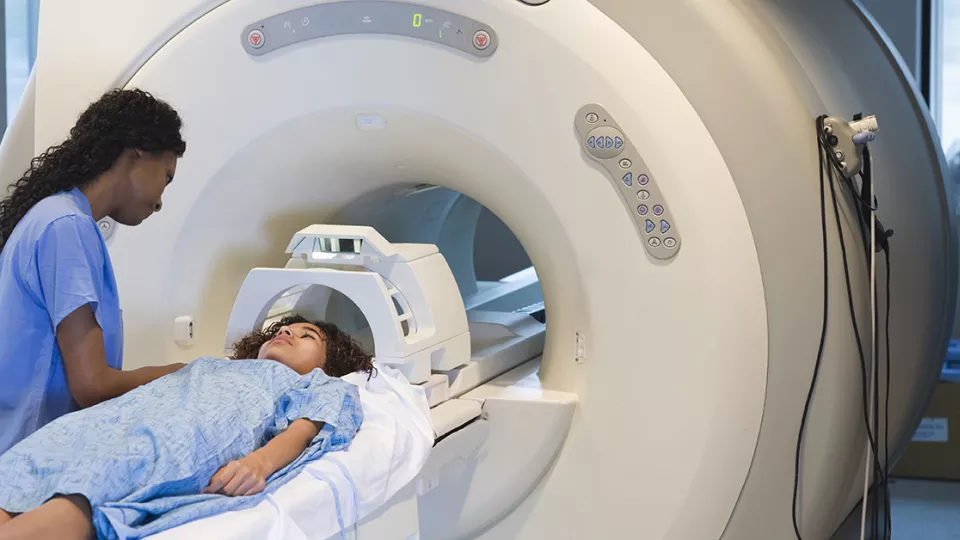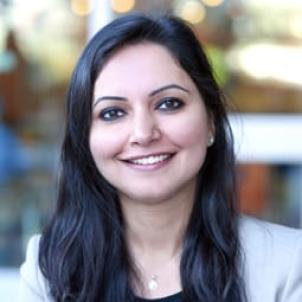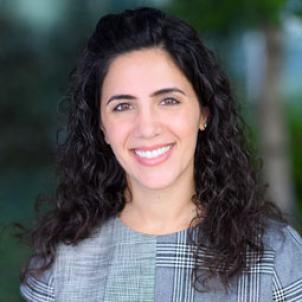
Presentations Showcase Latest Pediatric GI Research
Is unsedated transnasal esophagoscopy safe for patients with cirrhosis? How good is ultrasound at assessing fibrosis in children with fatty liver disease? And could a little-studied protein be a promising target in treating short bowel syndrome?
These are just a few of the questions addressed in presentations this past fall by faculty from the Division of Gastroenterology, Hepatology and Nutrition at Children’s Hospital Los Angeles.
In all, 35 faculty and fellows from the division and across CHLA presented at three national GI conferences: the American Association for the Study of Liver Diseases (AASLD); the North American Society for Pediatric Gastroenterology, Hepatology and Nutrition (NASPGHAN); and the Society of Pediatric Liver Transplantation (SPLIT).
Below, three physicians share key takeaways from their talks at the NASPGHAN 2022 Annual Meeting in Orlando, Florida.
TNE in high-risk patients

The use of unsedated transnasal esophagoscopy (TNE) has been increasing over the past few years. But is it safe for high-risk patients—including children with cirrhosis?
Vrinda Bhardwaj, MD, FAAP, Director of Gastroenterology Endoscopy Services at CHLA—the first and only pediatric hospital on the West Coast to offer TNE—shared results from two teenage patients with cirrhosis of the liver and multiple other conditions. The patients underwent TNE to screen for esophageal varices—enlarged veins in the esophagus that pose a risk for life-threatening bleeds.
The 10-minute, anesthesia-free procedures used a new, FDA-approved ultra-slim and single-use gastroscope. Both patients wore virtual reality goggles as a distraction measure. Neither patient had post-procedure bleeding, and both tolerated the TNE with minimal nose and throat discomfort. The team now plans to study the procedure in a larger group of high-risk patients.
“This procedure is not for everyone, but it can be a good screening modality to look for liver-related esophageal changes in children like these who are not good candidates for anesthesia,” Dr. Bhardwaj explains. “The hope is that this will allow us to prevent anesthesia exposures for more of these patients.”

Ultrasound versus MR elastography
Tania Mitsinikos, MD, Director of the Fatty Liver Clinic at CHLA, presented results from one of the first studies to compare the effectiveness of FibroScan ultrasound technology with magnetic resonance (MR) elastography in children with nonalcoholic fatty liver disease (NAFLD).
The retrospective study looked at 59 children ages 9 to 18 who had biopsy-proven NAFLD and had undergone FibroScan and MR elastography screening. The team found no statistically significant difference between the two modalities in detecting high-grade fibrosis.
That’s encouraging news, considering that ultrasound is quicker, cheaper and easier for patients to tolerate. But more study is needed.
“This is a small cohort,” Dr. Mitsinikos notes. “In addition, we avoid doing FibroScans on patients who have a body mass index (BMI) greater than 35 because that additional subcutaneous tissue can interfere with accurate ultrasound measurement.”
The team now plans to pool data with another institution to study this question in a larger group of patients. “As more therapy options become available for children, it will be increasingly important to monitor fibrosis,” Dr. Mitsinikos says. “I think there will be a role for both modalities.”

A Novel Target?
New therapies are desperately needed for children with short bowel syndrome. Linda Wang, MD, is investigating whether a little-studied protein called MALRD1 could serve as a potential novel target for developing these new treatments.
Dr. Wang presented early data from her preclinical studies of MALRD1, which compared intestinal development in mice with and without this key protein.
Her research—which is supported by the NASPGHAN Foundation/Nestle Nutrition Research Young Investigator Development Award—found that MALRD1 deficiency disrupts epithelial development, modifies stem cell behavior and increases cellular proliferation.
“What we’re seeing is that this protein is critical in the development process, but not as much for mature cells,” she explains. “The ultimate goal would be: Could we give back this protein to people who are deficient, and would that help restore intestinal growth?”
Although MALRD1 is known to influence bile acid signaling, a key pathway in digestion, Dr. Wang is investigating whether it also has a separate role in the small intestine. In addition, she is conducting RNA sequencing to compare protein expression in mice with and without MALRD1.
“We want to understand more about how MALRD1 works, what proteins it collaborates with, and how its downstream effects occur,” she says. “That will help us learn if this could be a viable therapeutic target in the future.”


